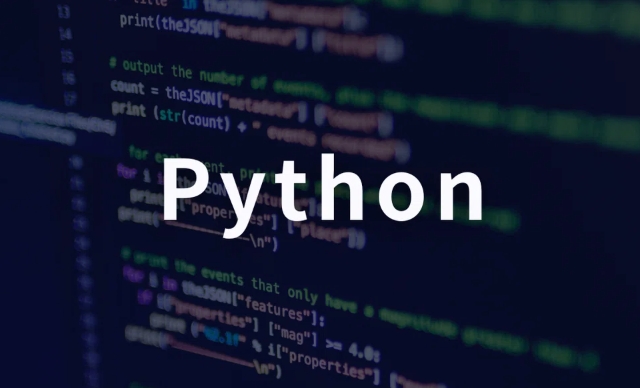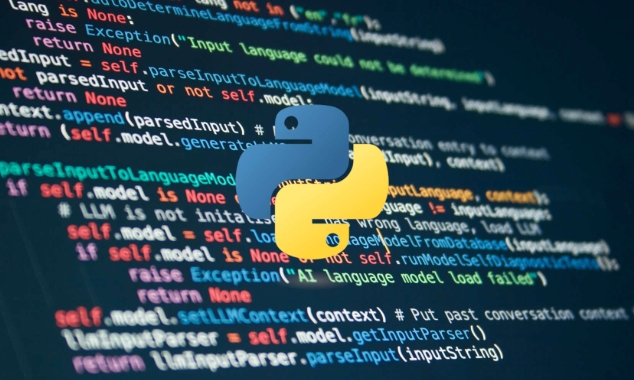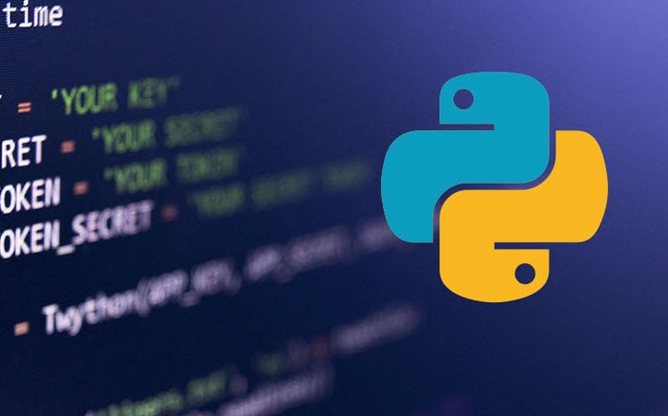The core methods of Python metaprogramming include: 1. Use type to dynamically create classes; 2. Control the class creation process through metaclasses; 3. Use decorators to modify functions or class behavior; 4. Dynamically modify object functions at runtime. These mechanisms allow developers to dynamically generate or modify code structures at runtime. For example, type can construct classes based on parameters, metaclasses can be used for interface consistency verification or automatically register subclasses, decorators are widely used in property encapsulation or framework routing management, while monkey patches support temporary enhancement class functionality, suitable for testing mocks or emergency fixes, but abuse should be avoided to maintain code maintainability.

Python's meta-programming capabilities are actually much stronger than many people think. It allows you to dynamically create or modify the behavior of classes, functions, and even modules at runtime. This flexibility makes Python perform very well in framework development, automated code generation, and scenarios where it requires highly abstraction.

If you were just writing scripts in Python or doing data processing before, you may not have really been exposed to this part of the function. But once you start to understand, you will find that its design philosophy is indeed "everything is an object", and this "everything" includes types, functions, modules, and even the class itself.
Let’s take a look at the common metaprogramming methods and usage methods in Python based on several practical application scenarios.

1. Understand type and custom class creation
Most of the time, we define classes through the class keyword. But at the bottom, Python uses the type() function to create classes. Understanding this is the first step toward metaprogramming.
You can simply create a class like this:

MyClass = type('MyClass', (), {})This code is equivalent to:
class MyClass:
passGoing further, you can also pass in methods or attributes:
def says_hello(self):
print("Hello")
MyClass = type('MyClass', (), {'say_hello': say_hello})This is especially useful when dynamically generating classes, such as generating different class structures based on configuration files, or automatically mapping database fields when building ORM models.
2. Use Metaclasses to control the creation process of class
Metaclasses are "classes of classes". When you define a class, Python calls type() by default to create it. But you can replace this creation logic by specifying the metaclass parameter.
Let's give a simple example: you want to make sure that each class has a required_method method.
class MyMeta(type):
def __new__(cls, name, bases, attrs):
if 'required_method' not in attrs:
raise TypeError("required_method must be implemented")
return super().__new__(cls, name, bases, attrs)
class MyClass(metaclass=MyMeta):
def required_method(self):
pass If required_method is not defined, the program will directly report an error when defining the class.
- Metaclasses are suitable for interface consistency checking
- It can also be used to automatically register subclasses (such as plug-in systems)
- Or add attributes/methods to multiple classes in a uniform manner
This can help you reduce a lot of duplicate code in large projects.
3. Decorators: the most commonly used metaprogramming tool
Decorators are probably the most common form of metaprogramming you are exposed to in daily development. It is essentially a function that is used to modify the behavior of other functions or classes without modifying their source code.
For example, the classic @property or @staticmethod :
class Person:
def __init__(self, name):
self._name = name
@property
def name(self):
return self._nameYou can also write a decorator yourself:
def log(func):
def wrapper(*args, **kwargs):
print(f"Calling {func.__name__}")
return func(*args, **kwargs)
Return wrapper
@log
def greet():
print("Hi!")
greet()
#Output:
# Calling greet
# Hi!Decorators are widely used in frameworks such as Flask and Django, such as routing registration, permission control, etc.
4. Dynamically modify object behavior: monkey patch and __dict__ operations
Sometimes you don’t want to change the source code, but you also want to temporarily enhance the functions of a certain class. At this time, you can use "monkey patch" - that is, dynamic replacement or addition methods at runtime.
class Greeter:
def greet(self):
print("Hi")
def new_greet(self):
print("Hello there!")
Greeter.greet = new_greetThis method is common in testing, such as temporarily replacing certain network requests with mock data.
But be aware of:
- It makes the code difficult to track
- Abuse in production environments is not recommended
- But if it is just for quick debugging or hot repair, it is a very effective method
Basically that's it. Although Python's meta-programming ability is powerful, using too much can easily make the code obscure and difficult to understand. The key is to use it in appropriate places, such as framework development, plug-in systems, automatic registration mechanisms, etc., rather than writing a bunch of incomprehensible code to show off your skills.
The above is the detailed content of Exploring Python's Metaprogramming Capabilities. For more information, please follow other related articles on the PHP Chinese website!

Hot AI Tools

Undress AI Tool
Undress images for free

Undresser.AI Undress
AI-powered app for creating realistic nude photos

AI Clothes Remover
Online AI tool for removing clothes from photos.

Clothoff.io
AI clothes remover

Video Face Swap
Swap faces in any video effortlessly with our completely free AI face swap tool!

Hot Article

Hot Tools

Notepad++7.3.1
Easy-to-use and free code editor

SublimeText3 Chinese version
Chinese version, very easy to use

Zend Studio 13.0.1
Powerful PHP integrated development environment

Dreamweaver CS6
Visual web development tools

SublimeText3 Mac version
God-level code editing software (SublimeText3)

Hot Topics
 Polymorphism in python classes
Jul 05, 2025 am 02:58 AM
Polymorphism in python classes
Jul 05, 2025 am 02:58 AM
Polymorphism is a core concept in Python object-oriented programming, referring to "one interface, multiple implementations", allowing for unified processing of different types of objects. 1. Polymorphism is implemented through method rewriting. Subclasses can redefine parent class methods. For example, the spoke() method of Animal class has different implementations in Dog and Cat subclasses. 2. The practical uses of polymorphism include simplifying the code structure and enhancing scalability, such as calling the draw() method uniformly in the graphical drawing program, or handling the common behavior of different characters in game development. 3. Python implementation polymorphism needs to satisfy: the parent class defines a method, and the child class overrides the method, but does not require inheritance of the same parent class. As long as the object implements the same method, this is called the "duck type". 4. Things to note include the maintenance
 Python Function Arguments and Parameters
Jul 04, 2025 am 03:26 AM
Python Function Arguments and Parameters
Jul 04, 2025 am 03:26 AM
Parameters are placeholders when defining a function, while arguments are specific values ??passed in when calling. 1. Position parameters need to be passed in order, and incorrect order will lead to errors in the result; 2. Keyword parameters are specified by parameter names, which can change the order and improve readability; 3. Default parameter values ??are assigned when defined to avoid duplicate code, but variable objects should be avoided as default values; 4. args and *kwargs can handle uncertain number of parameters and are suitable for general interfaces or decorators, but should be used with caution to maintain readability.
 Explain Python generators and iterators.
Jul 05, 2025 am 02:55 AM
Explain Python generators and iterators.
Jul 05, 2025 am 02:55 AM
Iterators are objects that implement __iter__() and __next__() methods. The generator is a simplified version of iterators, which automatically implement these methods through the yield keyword. 1. The iterator returns an element every time he calls next() and throws a StopIteration exception when there are no more elements. 2. The generator uses function definition to generate data on demand, saving memory and supporting infinite sequences. 3. Use iterators when processing existing sets, use a generator when dynamically generating big data or lazy evaluation, such as loading line by line when reading large files. Note: Iterable objects such as lists are not iterators. They need to be recreated after the iterator reaches its end, and the generator can only traverse it once.
 Python `@classmethod` decorator explained
Jul 04, 2025 am 03:26 AM
Python `@classmethod` decorator explained
Jul 04, 2025 am 03:26 AM
A class method is a method defined in Python through the @classmethod decorator. Its first parameter is the class itself (cls), which is used to access or modify the class state. It can be called through a class or instance, which affects the entire class rather than a specific instance; for example, in the Person class, the show_count() method counts the number of objects created; when defining a class method, you need to use the @classmethod decorator and name the first parameter cls, such as the change_var(new_value) method to modify class variables; the class method is different from the instance method (self parameter) and static method (no automatic parameters), and is suitable for factory methods, alternative constructors, and management of class variables. Common uses include:
 How to handle API authentication in Python
Jul 13, 2025 am 02:22 AM
How to handle API authentication in Python
Jul 13, 2025 am 02:22 AM
The key to dealing with API authentication is to understand and use the authentication method correctly. 1. APIKey is the simplest authentication method, usually placed in the request header or URL parameters; 2. BasicAuth uses username and password for Base64 encoding transmission, which is suitable for internal systems; 3. OAuth2 needs to obtain the token first through client_id and client_secret, and then bring the BearerToken in the request header; 4. In order to deal with the token expiration, the token management class can be encapsulated and automatically refreshed the token; in short, selecting the appropriate method according to the document and safely storing the key information is the key.
 What are Python magic methods or dunder methods?
Jul 04, 2025 am 03:20 AM
What are Python magic methods or dunder methods?
Jul 04, 2025 am 03:20 AM
Python's magicmethods (or dunder methods) are special methods used to define the behavior of objects, which start and end with a double underscore. 1. They enable objects to respond to built-in operations, such as addition, comparison, string representation, etc.; 2. Common use cases include object initialization and representation (__init__, __repr__, __str__), arithmetic operations (__add__, __sub__, __mul__) and comparison operations (__eq__, ___lt__); 3. When using it, make sure that their behavior meets expectations. For example, __repr__ should return expressions of refactorable objects, and arithmetic methods should return new instances; 4. Overuse or confusing things should be avoided.
 How does Python memory management work?
Jul 04, 2025 am 03:26 AM
How does Python memory management work?
Jul 04, 2025 am 03:26 AM
Pythonmanagesmemoryautomaticallyusingreferencecountingandagarbagecollector.Referencecountingtrackshowmanyvariablesrefertoanobject,andwhenthecountreacheszero,thememoryisfreed.However,itcannothandlecircularreferences,wheretwoobjectsrefertoeachotherbuta
 Python `@property` decorator
Jul 04, 2025 am 03:28 AM
Python `@property` decorator
Jul 04, 2025 am 03:28 AM
@property is a decorator in Python used to masquerade methods as properties, allowing logical judgments or dynamic calculation of values ??when accessing properties. 1. It defines the getter method through the @property decorator, so that the outside calls the method like accessing attributes; 2. It can control the assignment behavior with .setter, such as the validity of the check value, if the .setter is not defined, it is read-only attribute; 3. It is suitable for scenes such as property assignment verification, dynamic generation of attribute values, and hiding internal implementation details; 4. When using it, please note that the attribute name is different from the private variable name to avoid dead loops, and is suitable for lightweight operations; 5. In the example, the Circle class restricts radius non-negative, and the Person class dynamically generates full_name attribute






